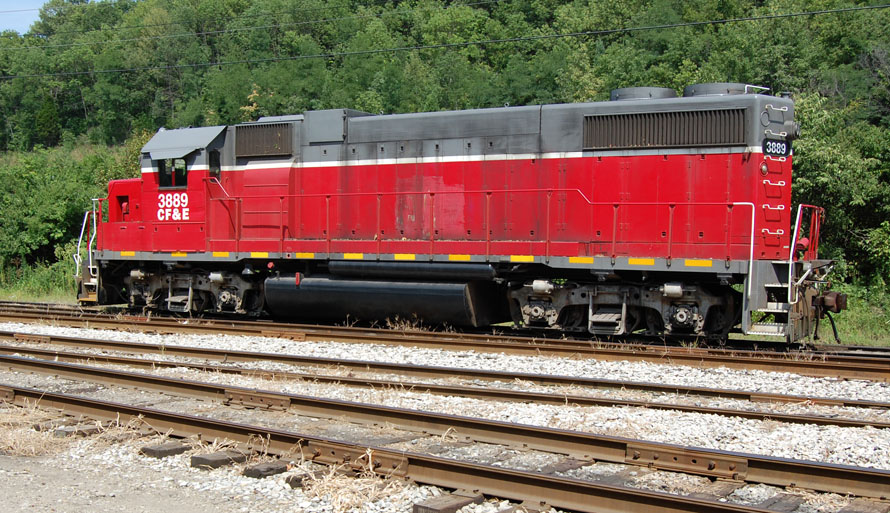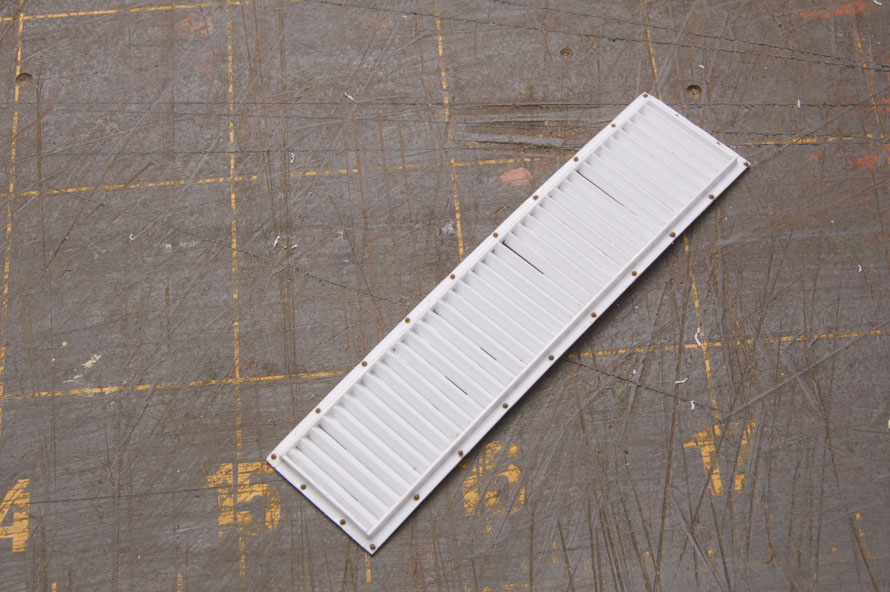Scratchbuilding is a series of choices made throughout the entirety of a project. From where does one start, to how far to take a detail. Do you try to modify a commercial product or is it simpler to start from zero?
I’ve mentioned a diesel project I’m nibbling away on. Currently, I’m in the very beginning phase of gathering reference material and learning all I can about this loco, which happens to be a late phase GP38-2 I photographed at Valley Junction a couple of years ago.
I will tell you now, do not expect to see rapid progress on this build. In fact, don’t expect to see any for a while. Right now, I’m quite content to nibble around the edges, study, gather parts and pieces and do the build in my head. Last week I posted a shot of the inertial filter hatch. That was one of several test pieces to get a feel for the project. I’ve done the same thing with the grills on the rear of the engine. For now, I’m just making some individual parts to try out different techniques and to see what works (photo below).
The part is made from 0.060″ triangular strips from Plastruct that represent the cooling fins. The frame is Evergreen 0.060″ angle stock studded with 0.020″ Tichy rivets. This part represents attempt number four. I laid a piece of masking tape sticky side up to hold the tiny pieces in place while being fitted and glued. I left the tape on the backside, until I decided that wasn’t a good idea. The curl and gaps you see are from removing the tape and, the longer I look at it, they’re starting to bug me. In spite of the flaws I introduced by removing the tape, I consider this part the most successful of the lot. It’s clean, the rivets are in line and evenly spaced. 0.020″ is too large for the rivets, but I couldn’t find any smaller in my supply or at the hobby shop. I could punch them with my riveter, but the Tichy product is actually easier to use. Choices.
“Hey Mike, GP38-2s are available commercially in 1/4″ scale.” I know. I also know that one such commercial model is so fundamentally flawed that it should be classified as the toy it is. A conscientious modeler would have to grind it back to a bare plastic shell. I would also chuck the trucks and frame in favor of the far superior P&D Blomburg trucks and Protocraft P48 conversion kit. All of that on top of paying good money that will only encourage the production of more crappy models from this company. So tell me, what is the advantage in using it? None that I can see. It’s a series of choices, individual choices about how one spends personal hobby time.
Regards,
Mike

Mike,
Lovely choice of subject matter: there is something about the GP 38 which can only be described as “brutish balance”. It just looks right.
Anyway…
Question 1: Are you enjoying what you are doing?
Question 2: Are all further questions superfluous?
Simon
…It just looks right.
Thank you Simon. I’ve had a fondness for modern power, especially since I’ve seen this unit in action on the branch.
Q1: Yes.
Q2: Not at all. Given the nature of online spaces, I’ll share what I want and keep the rest to myself until ready.
Regards,
Mike
Hi Mike,
GP38’s (OK, not the dash-2 variant) are almost as old as me, so I wouldn’t call them all that modern…
As to the second question, I wasn’t clear in my meaning. What I meant was, if you are enjoying the build, then whether or not there is an RTR option, let alone the accuracy of it, is not relevant.
Simon
Simon,
I have a 1966 Car and Locomotive Cyclopedia that includes GP38s, so yes, they do go back quite a way. To your second point, I’ve made a number of decisions, established a few criteria and so on for this project. The RTR model is indeed a non-issue for me. What is important to me is staying true to the criteria and decisions I’ve outlined for myself.
Thanks for the clarification.
Regards, Mike